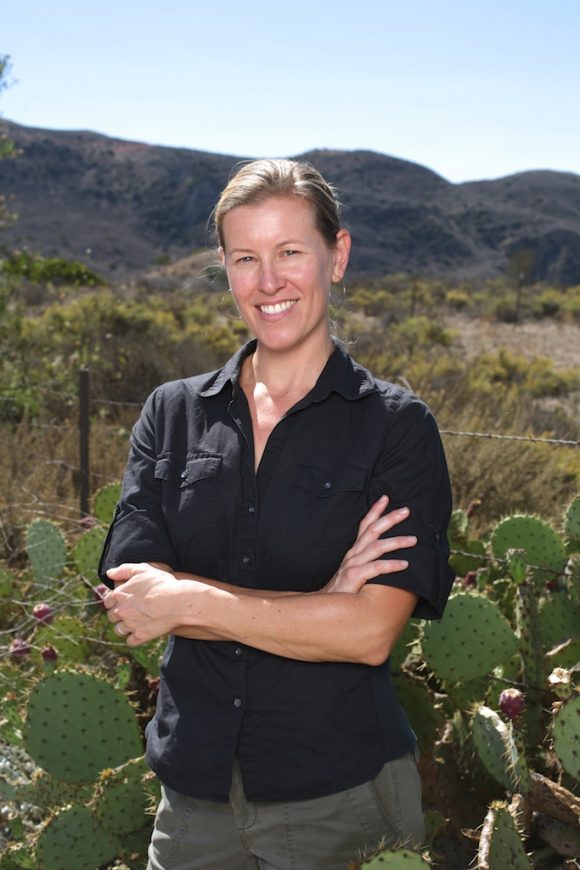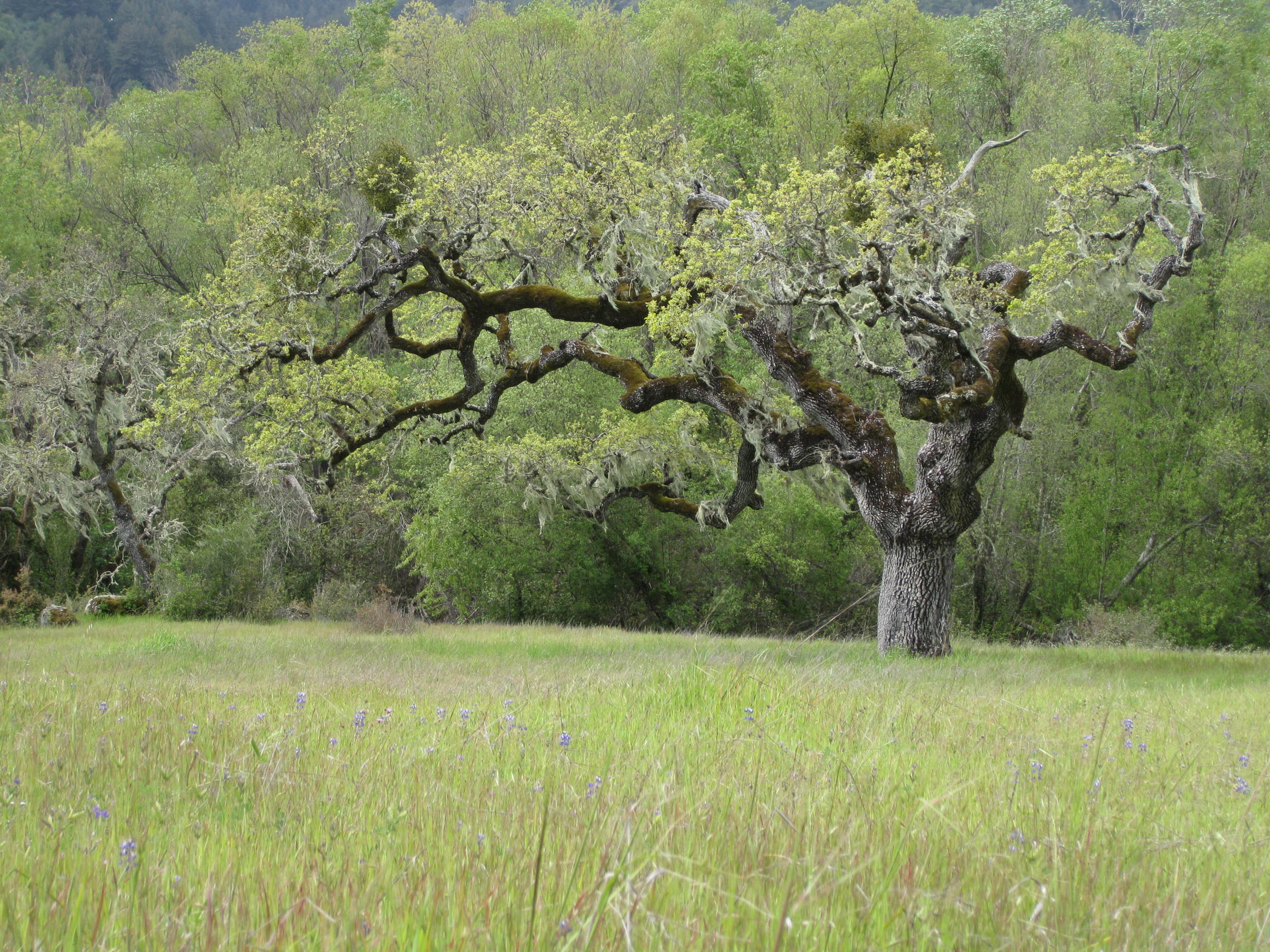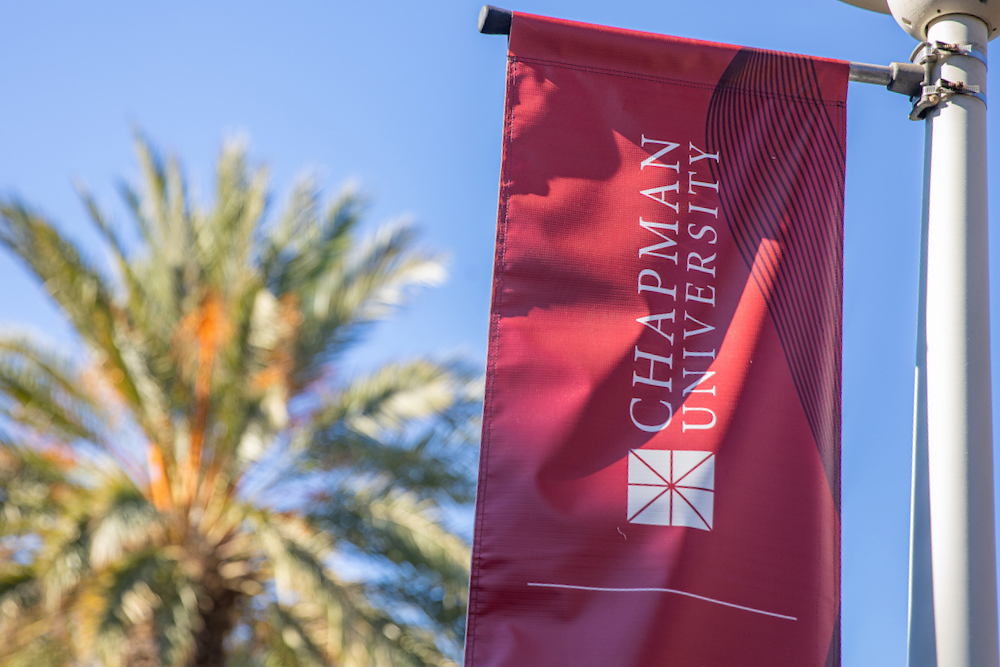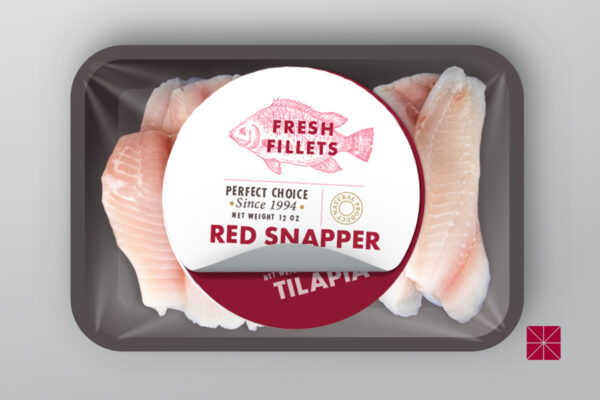The serpentine grasslands of Northern California where Jennifer Funk, Ph.D., studies invasive plant species are a botanist’s delight.
“It’s this gorgeous preserve where there’s all kinds of research projects going on,” says the Chapman University associate professor as she describes the site where she researches non-invasive plant species that are thorns – sometimes literally – in the backsides of California’s ranching, farming and firefighting activities. “There are a lot of different vegetation communities which makes it really exciting to work there.”

Professor Jennifer Funk, pictured here at the Irvine Ranch Conservancy, researches how native and non-native plants compete for resources.
Particularly exciting to Funk is that the Jasper Ridge Biological Preserve in the foothills of Santa Cruz Mountains served as the field lab where she uncovered insights into the workings of native plants and how they might be used to slow the advance of non-invasive species. In that preserve maintained by Stanford University, Funk tested one of the common techniques used to battle non-natives – planting native plants that are similar to the interlopers. For example, embedding a California native grass to go toe-to-toe with an annual rye grass imported by European settlers, counting on the “hometown” advantage of the indigenous plant to win the day.
Her findings suggest that in some circumstances, a counter intuitive approach might be more effective. In the grasslands she studied, Funk found that native plants that had long, skinny roots and channeled their energy into creating a leafy mass with leaves relatively low in nitrogen outperformed the non-native grasses, regardless of whether they were lookalike cousins.
“What we found is that it seemed like the native species that were very successful at suppressing the invasive species all tended to have this common set of traits. Our data suggests it’s not just similarity,” she says.
In short, it may be a native shrub or flower that can best compete with one of those non-native grasses that turn to fire fodder every summer. Funk doesn’t think shading by the leafier plants was a factor, either. She suspects their fast-growing long roots eat up the below-ground resources. The findings are reported in her paper “Testing the trait-based community framework: do functional traits predict competitive outcomes?” published this summer in Ecology.
Funk hopes this research adds to the body of knowledge land managers and agencies need to protect wildlands and control invasive species that can lead to numerous problems, from sickened grazing livestock to land erosion. Moreover, invasive species are related to wildfires. In its 2015 report
The Rising Cost of Wildfire Operations the U.S. Forest Service listed invasive plant growth as one of the factors fueling catastrophic fires.
A sage lesson
But aren’t those native shrubs on the hillsides bone dry, too? Not completely, says Funk. California sagebrush – “the model shrub around here” – and other natives contain water even during summer. “So if fire does move through, it doesn’t burn as quickly or isn’t as intense,” she says.
So controlling them — they’re too widespread to be completely eliminated, she says — is important to many sectors ofthe economy. Funk and colleagues at University of California, Irvine, hope to collaborate on the development of databases that land managers can use as another resource in their work.
More research is needed for such a catalogue to be complete. Funk, who teaches restoration ecology in the Schmid College of Science and Technology, focused on the traits of the top performers in grasslands. However, in other places like woodland forests, deserts or wetlands, different collections of traits may be key factors, she says.
But she’s encouraged by the research.
“It’s not like you can just go and pick a plant that has these characteristics. It really depends on the system you’re working in. You have to consider the ecosystem,” she says. “What’s exciting is that we’re slowly moving toward a general framework. That framework might be that you need to identify native plants that are really good competitors. And we’re zoning in on the fact that there might be a suite of traits that is really important for a particular system.”
Display image at top/A view of grasslands at Jasper Ridge Biological Preserve. Photo courtesy of Jennifer Funk.





The native grasses are gorgeous I hope you find one that can drive out the non-native fire-starters!